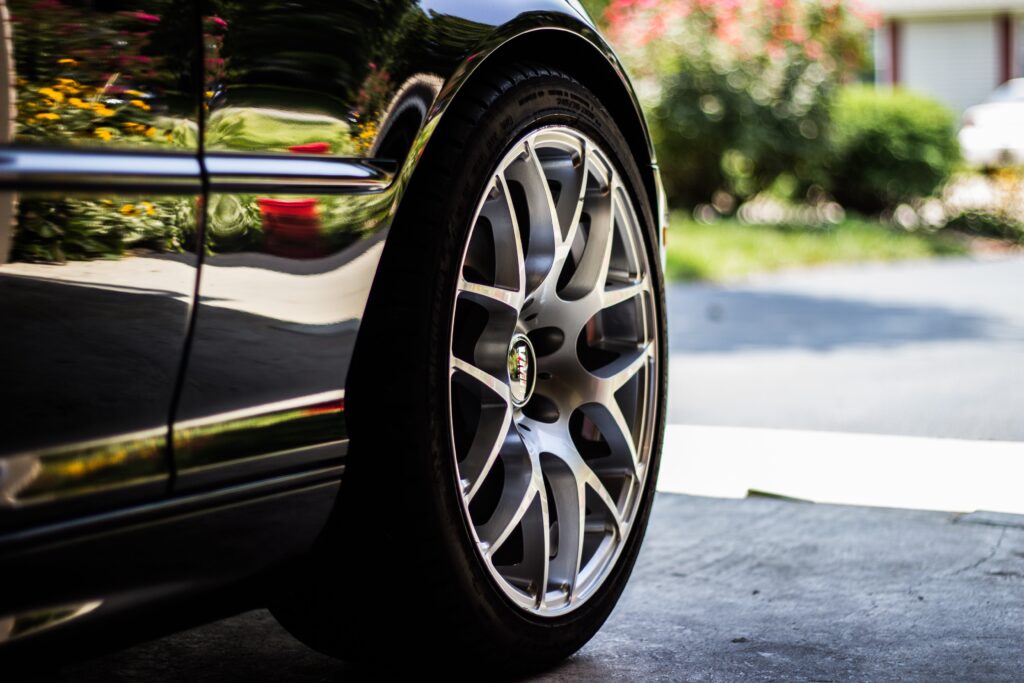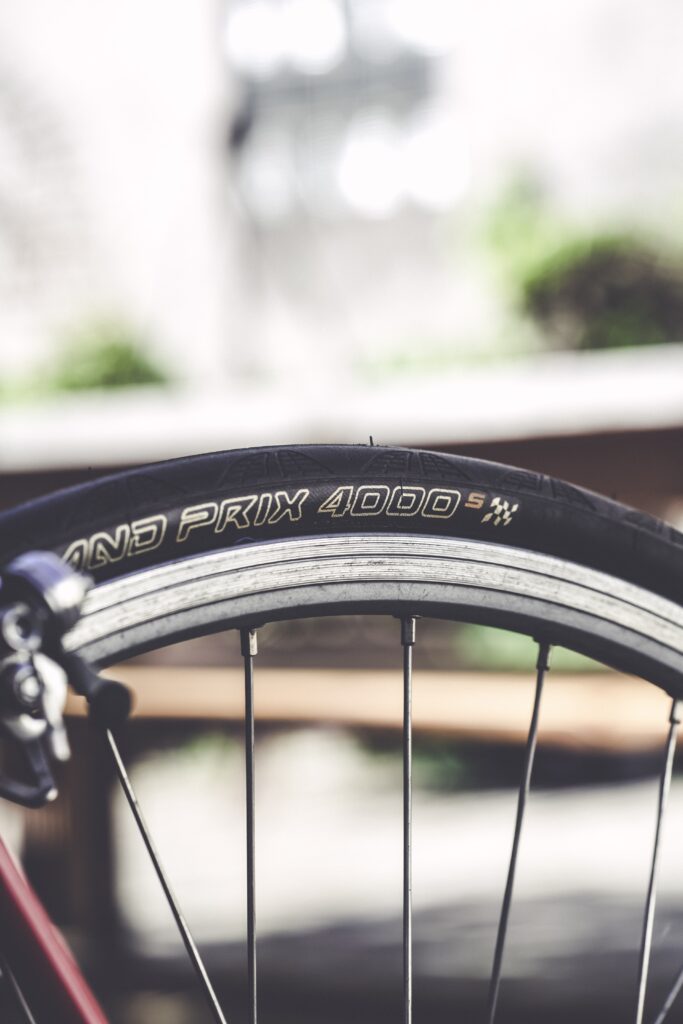Have you ever found yourself in a situation where you needed to inflate a tire but didn’t have a pressure gauge on hand? Well, the good news is that there is a way to overcome this obstacle. With a portable tire compressor, it is indeed possible to inflate a tire without a pressure gauge. In this article, we will explore the steps you can take to ensure a proper tire inflation without the need for a pressure gauge. So, whether you are on a road trip or just need to quickly inflate a tire, keep reading to discover the simple solution to this common problem.

Understanding Portable Tire Compressors
Basics of a portable tire compressor
A portable tire compressor is a compact and lightweight device used to inflate vehicle tires. It is a handy tool to have in case of emergencies, especially when you find yourself with a flat tire and no nearby gas station. portable tire compressors are designed to be easily carried around in your vehicle, allowing you to inflate your tires anytime, anywhere.
Components and functionalities of a portable tire compressor
Portable tire compressors consist of several key components that work together to inflate tires efficiently. The main components include a motor, an air compressor, a pressure gauge, and a hose with a tire valve connector. The motor powers the air compressor, which draws air from the surrounding environment and compresses it for inflation. The pressure gauge is used to measure the air pressure inside the tire, providing you with valuable information during the inflation process.
Advantages of using a portable tire compressor
Using a portable tire compressor offers several advantages. Firstly, it provides you with the convenience of inflating your tires wherever and whenever you need to. This is especially beneficial in situations where there are no nearby gas stations or service centers. Secondly, portable tire compressors are compact and lightweight, making them easy to store in your vehicle without taking up much space. Additionally, they are user-friendly and usually come with clear instructions on how to operate them, making tire inflation a simple and hassle-free process.
Potential drawbacks of using a portable tire compressor
While portable tire compressors are incredibly useful, it is important to note some potential drawbacks. One drawback is the time it takes to inflate a tire using a portable compressor. Portable compressors typically have smaller motors and lower airflow rates compared to larger, stationary compressors. As a result, it may take longer to fully inflate a tire. Another drawback is the noise level produced by the compressor. Some portable compressors can be quite loud, which may be inconvenient or bothersome, particularly if you are inflating your tires in a quiet residential area or during nighttime hours.
Role of a Pressure Gauge in Tire Inflation
Understanding the purpose of a pressure gauge
A pressure gauge is a crucial tool for tire inflation as it allows you to monitor the air pressure within the tire accurately. By using a pressure gauge, you can ensure that your tires are inflated to the recommended pressure level, which is essential for optimal performance and safety. Tire pressure directly affects factors such as fuel efficiency, tire wear, and handling capabilities. By regularly checking and maintaining proper tire pressure, you can extend the lifespan of your tires and enhance overall vehicle performance.
Operation of a pressure gauge
Using a pressure gauge is simple and straightforward. To measure the tire pressure, you need to remove the valve cap from the tire valve and press the gauge firmly onto the valve. This will release a small amount of air, and the gauge will display the current pressure reading. Some pressure gauges have digital displays, while others may use a dial or a stick indicator. It is important to ensure the pressure gauge is properly calibrated and in good working condition to obtain accurate readings.
Benefits of using a pressure gauge in inflating tires
Using a pressure gauge when inflating your tires provides multiple benefits. Firstly, it allows you to accurately determine the current tire pressure, ensuring that it is within the recommended range. This can greatly improve fuel efficiency and tire wear, as overinflation or underinflation can cause uneven wear patterns and reduce fuel economy. Additionally, a pressure gauge helps you identify any slow leaks or punctures in your tires, allowing you to take immediate action and prevent further damage.
Consequences of ignoring pressure gauge during tire inflation
Ignoring the use of a pressure gauge during tire inflation can have detrimental consequences. Overinflating or underinflating your tires can compromise handling and safety, leading to a higher risk of accidents. Overinflation can cause the tires to become rigid and decrease traction, while underinflation can result in poor handling and increased tire wear. Additionally, incorrect tire pressure can affect fuel efficiency, causing unnecessary fuel consumption and higher expenses. It is crucial to prioritize the use of a pressure gauge to maintain proper tire pressure.

Inflating a Tire Without a Pressure Gauge
Steps involved in inflating a tire without a pressure gauge
In situations where a pressure gauge is not available, it is still possible to inflate a tire using a portable tire compressor. The process involves a few steps. First, connect the compressor hose to the tire valve using the appropriate valve connector. Ensure a secure connection to prevent air leaks. Then, turn on the compressor and allow it to operate until you feel the tire becoming firm. Finally, periodically check the tire’s firmness by pressing on the sidewall with your hand. It should feel solid with minimal give when fully inflated.
Safety precautions to be considered
When inflating a tire without a pressure gauge, it is important to observe safety precautions. Ensure that you are in a safe location with ample space to maneuver while operating the compressor. Additionally, during the inflation process, avoid standing directly in front of the tire being inflated to minimize the risk of injury if the tire bursts or the valve fails. It is recommended to wear protective eyewear and gloves to protect yourself from any potential debris or sudden tire failure.
Expected difficulties and challenges
Inflating a tire without a pressure gauge may present some difficulties and challenges. Without a pressure gauge, it is difficult to determine the exact pressure level of the tire. This can result in overinflation or underinflation, which can negatively impact the tire’s performance and safety. Additionally, without a pressure gauge, it may take some trial and error to achieve the desired firmness of the tire, as you rely solely on touch and feel. It is important to exercise caution and regularly check the tire’s firmness during the inflation process.
Understanding Tire Pressure and Its Importance
What is tire pressure
Tire pressure refers to the amount of air pressure contained within a vehicle’s tires, measured in pounds per square inch (psi) or kilopascals (kPa). It is essential to maintain the proper tire pressure recommended by the vehicle manufacturer. Properly inflated tires ensure optimal performance, safety, and longevity.
The role of tire pressure in vehicle performance
Tire pressure plays a crucial role in various aspects of vehicle performance. Firstly, it affects fuel efficiency. Underinflated tires create more rolling resistance, requiring the engine to work harder and consume more fuel. Properly inflated tires reduce rolling resistance, improving fuel economy. Secondly, tire pressure influences handling and responsiveness. Overinflated tires can make the vehicle ride harshly and reduce traction, while underinflated tires can cause poor handling and compromised stability.
Ideal pressure range for different vehicles and tires
The ideal tire pressure varies depending on the vehicle and tire type. Vehicle manufacturers provide recommended tire pressure specifications, typically found on a sticker inside the driver’s door jamb or in the vehicle’s manual. Make sure to follow these recommendations. The specified tire pressure may also differ depending on the load carried in the vehicle or other specific conditions. It is essential to adjust the tire pressure accordingly.
Dangers of over and under inflation
Both overinflation and underinflation can have serious consequences. Overinflated tires have reduced contact with the road surface, resulting in decreased traction and stability. This can increase the risk of skidding and loss of control, especially on wet or slippery surfaces. Overinflation also leads to uneven tire wear, reducing the tire’s lifespan. On the other hand, underinflated tires are prone to excessive heat buildup, sidewall damage, and increased rolling resistance. This can lead to tire failure, decreased fuel efficiency, and compromised handling.

Alternatives to a Pressure Gauge
Different methods to estimate tire pressure
When a pressure gauge is not available, there are alternative methods to estimate tire pressure. One common method is the “thumb test,” where you can press your thumb against the tire’s sidewall to assess its firmness. If the tire feels too soft and easily compressible, it is likely underinflated. If it feels overly rigid, it may be overinflated. Another method is visual inspection, where you visually compare the tire’s shape and profile to determine if it appears adequately inflated.
Use of built-in pressure indicators
Some newer vehicles are equipped with built-in pressure monitoring systems that display the tire pressure on the vehicle’s dashboard. These systems use sensors within the tires to constantly monitor and provide real-time tire pressure readings. They eliminate the need for a separate pressure gauge and provide a convenient and reliable way to monitor tire pressure.
Dependence on expert judgment and intuition
In the absence of a pressure gauge or other measuring devices, expert judgment and intuition can play a role in estimating tire pressure. Experienced individuals who frequently deal with tires may have developed a sense of the proper tire pressure through their past experiences. However, it is important to note that relying solely on judgment and intuition may not be as accurate or reliable as using a pressure gauge.
Optimum Usage of Portable Tire Compressors
Ensuring effective use of tire compressor
To ensure effective use of a portable tire compressor, several factors should be considered. Firstly, familiarize yourself with the compressor’s user manual to understand its specific features, limitations, and recommended operating procedures. Properly connecting the hose to the tire valve and ensuring a secure seal is crucial to prevent air leaks. Additionally, following the recommended inflation guidelines and checking the tire’s firmness regularly during the inflation process will help achieve the desired pressure.
Tire compressor maintenance and care
Maintaining and caring for your portable tire compressor is important for its long-term performance and reliability. Keep the compressor clean and free of dirt and debris, as this can hinder its functionality. Regularly inspect the compressor, hose, and connections for any signs of damage or wear. It is also essential to regularly check and replace the compressor’s air filter if applicable. Proper storage, such as keeping it in a dry and dust-free environment, will help prolong the lifespan of the compressor.
Maximizing lifespan of portable tire compressors
To maximize the lifespan of your portable tire compressor, proper usage and preventative maintenance are key. Avoid exceeding the recommended duty cycle of the compressor, as continuous operation beyond its capacity can lead to overheating and premature failure. Allow the compressor to cool down between uses to prevent overheating. Regularly lubricate any applicable moving parts according to the manufacturer’s recommendations. Following these guidelines will help ensure that your portable tire compressor remains reliable and functional for a longer period of time.
Real-life Scenarios for Inflating Tires without Pressure Gauge
Emergency situations
In emergency situations, such as experiencing a flat tire in a remote location or during unfavorable weather conditions, inflating a tire without a pressure gauge may be necessary. In such cases, it is important to prioritize safety and take necessary precautions. Follow the steps discussed earlier in this article to inflate the tire without a pressure gauge, and then proceed with caution while driving to the nearest service center for a proper tire pressure check and adjustment.
Outdoor or remote locations
When outdoors or in remote locations where a service center or gas station is not readily available, inflating a tire without a pressure gauge can provide temporary relief until a proper pressure check can be performed. Ensure that you have a portable tire compressor and the necessary tools to complete the inflation process. It is advisable to drive cautiously and at reduced speeds until you can access a service center to verify and adjust the tire pressure accurately.
Practical tips and tricks for efficient tire inflation without a pressure gauge
When inflating a tire without a pressure gauge, there are some practical tips and tricks that can help ensure more efficient inflation. One such tip is to use a stopwatch or a timer while operating the tire compressor. By timing how long it takes to inflate the tire, you can estimate the level of inflation based on past experience. Additionally, using your body weight as a reference can provide a rough estimate of tire firmness. Compare the firmness of the inflated tire to your other tires or a known reference point to gauge its adequacy.
Conclusion
In conclusion, while it is possible to inflate a tire without a pressure gauge using a portable tire compressor, it is not the ideal approach. The use of a pressure gauge ensures accurate inflation within the recommended range, promoting optimal vehicle performance, safety, and longevity of the tires. However, in emergency situations or when a pressure gauge is not available, inflating a tire without one can provide temporary relief. It is important to exercise caution, follow the recommended steps, and prioritize safety. Ultimately, using a pressure gauge remains the best practice for proper tire inflation and maintenance. By regularly monitoring and maintaining the correct tire pressure, you can enjoy enhanced fuel efficiency, extended tire lifespan, and improved safety on the road. Always strive to prioritize your safety and the well-being of your vehicle.
